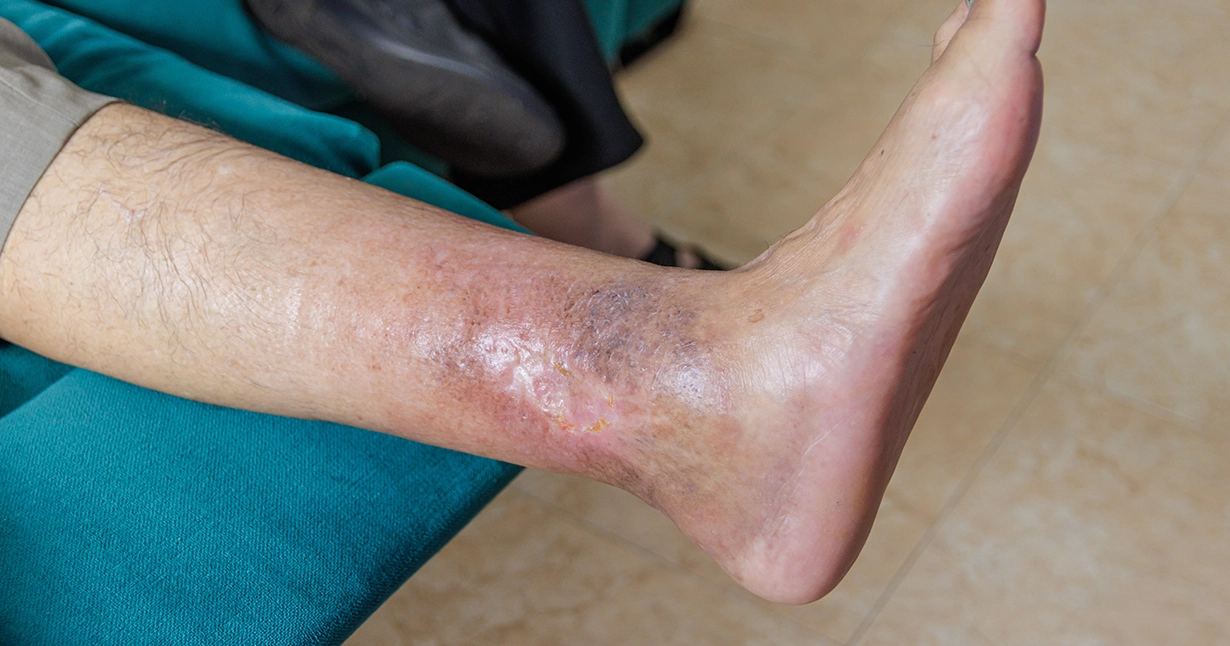Wound Wellness Approach
At Wound Wellness, we understand that successful venous ulcer treatment requires addressing both the wound and the circulation problems that caused it. Our nurse practitioners have extensive experience with compression therapy and venous wound management, providing comprehensive care that promotes healing while preventing recurrence. We offer both in-office and mobile services throughout Lake Villa, Lindenhurst, Grayslake, and surrounding Lake County communities, making specialized venous ulcer treatment accessible regardless of your mobility limitations. Our holistic approach includes wound care, compression therapy, and education about lifestyle modifications that support long-term leg health and prevent future complications.
If you're struggling with a venous ulcer or have concerns about leg swelling and circulation problems, expert help is available. Contact Wound Wellness today to schedule a comprehensive evaluation with our experienced wound care team. We'll assess your circulation, develop a personalized treatment plan that addresses both your wound and underlying vein problems, and provide the ongoing support you need for successful healing. With our specialized expertise and convenient service options throughout Lake Villa and Lake County, effective venous ulcer treatment is more accessible than ever. Call us at (224) 215-6242 or use our online appointment request form to begin your journey toward healing.
Condition at a glance
Venous Ulcers
Venous ulcers result from chronic venous insufficiency, a condition where the one-way valves in leg veins become damaged or weakened. When these valves don't function properly, blood pools in the lower legs instead of returning efficiently to the heart. This causes increased pressure in the veins, leading to swelling, skin changes, and eventually tissue breakdown that forms ulcers. Risk factors include previous blood clots, varicose veins, family history of vein problems, prolonged standing or sitting, obesity, pregnancy, and aging. People who have had multiple pregnancies, leg injuries, or previous venous ulcers are at particularly high risk for developing new wounds.
Venous ulcers typically develop gradually, often preceded by skin changes that serve as warning signs. Early symptoms include leg swelling that worsens throughout the day, aching or heaviness in the legs, skin discoloration (usually brownish or reddish), and thickening or hardening of skin around the ankles. The skin may become shiny, tight, or develop a leathery texture. When ulcers form, they're usually shallow, irregularly shaped wounds with red or yellow tissue in the wound bed. They commonly occur on the inner side of the leg near the ankle and may produce moderate to heavy drainage. Unlike arterial ulcers, venous ulcers are typically less painful, though they can cause significant discomfort and affect quality of life.
Our treatment approach for venous ulcers focuses on addressing both the wound and the underlying circulation problem that caused it. The cornerstone of treatment is compression therapy, which helps reduce swelling and improve blood flow back to the heart. We carefully assess your circulation to determine the appropriate level of compression and select the most suitable compression system for your needs and lifestyle. Wound care includes gentle cleansing, debridement when necessary, and moisture-balanced dressings that promote healing. We also address factors that may impede healing, such as infection, poor nutrition, or other health conditions, while providing education about leg elevation, exercise, and other strategies that support venous circulation.
When to Seek care
Seek medical attention promptly if you develop any open wound on your leg, especially if you have a history of varicose veins, leg swelling, or previous venous ulcers. Don't wait if you notice increasing leg swelling, skin color changes, or areas of skin breakdown, as early intervention can prevent minor problems from becoming chronic wounds. Emergency care is needed for signs of infection including increasing pain, redness extending beyond the wound, fever, red streaking up the leg, or pus drainage. If you have an existing venous ulcer that suddenly becomes more painful, develops foul-smelling drainage, or shows signs of worsening despite treatment, contact your wound care provider immediately.
Prevention Management
Preventing venous ulcers requires managing the underlying circulation problems that cause them. If you have varicose veins, chronic leg swelling, or previous venous ulcers, take steps to improve circulation and reduce pressure in your leg veins. Avoid prolonged standing or sitting—when you must sit for long periods, elevate your legs and perform ankle pumps or calf raises regularly. Maintain a healthy weight to reduce pressure on leg veins, and engage in regular walking or other exercise that promotes circulation. Wear compression stockings as recommended by your healthcare provider, and avoid tight clothing that restricts blood flow around the waist, groin, or legs.
Preventing venous ulcers requires managing the underlying circulation problems that cause them. If you have varicose veins, chronic leg swelling, or previous venous ulcers, take steps to improve circulation and reduce pressure in your leg veins. Avoid prolonged standing or sitting—when you must sit for long periods, elevate your legs and perform ankle pumps or calf raises regularly. Maintain a healthy weight to reduce pressure on leg veins, and engage in regular walking or other exercise that promotes circulation. Wear compression stockings as recommended by your healthcare provider, and avoid tight clothing that restricts blood flow around the waist, groin, or legs.
Treatment Options
Our comprehensive venous ulcer treatment combines proven wound care techniques with circulation improvement strategies. Treatment typically includes compression therapy using multi-layer bandaging systems or graduated compression garments, along with specialized wound dressings that maintain optimal healing conditions. For complex wounds, we may recommend advanced therapies such as skin substitution, negative pressure wound therapy, or other treatments that accelerate healing. We work closely with vascular specialists when needed to address underlying vein problems and coordinate care with your other healthcare providers to ensure the best possible outcomes.

